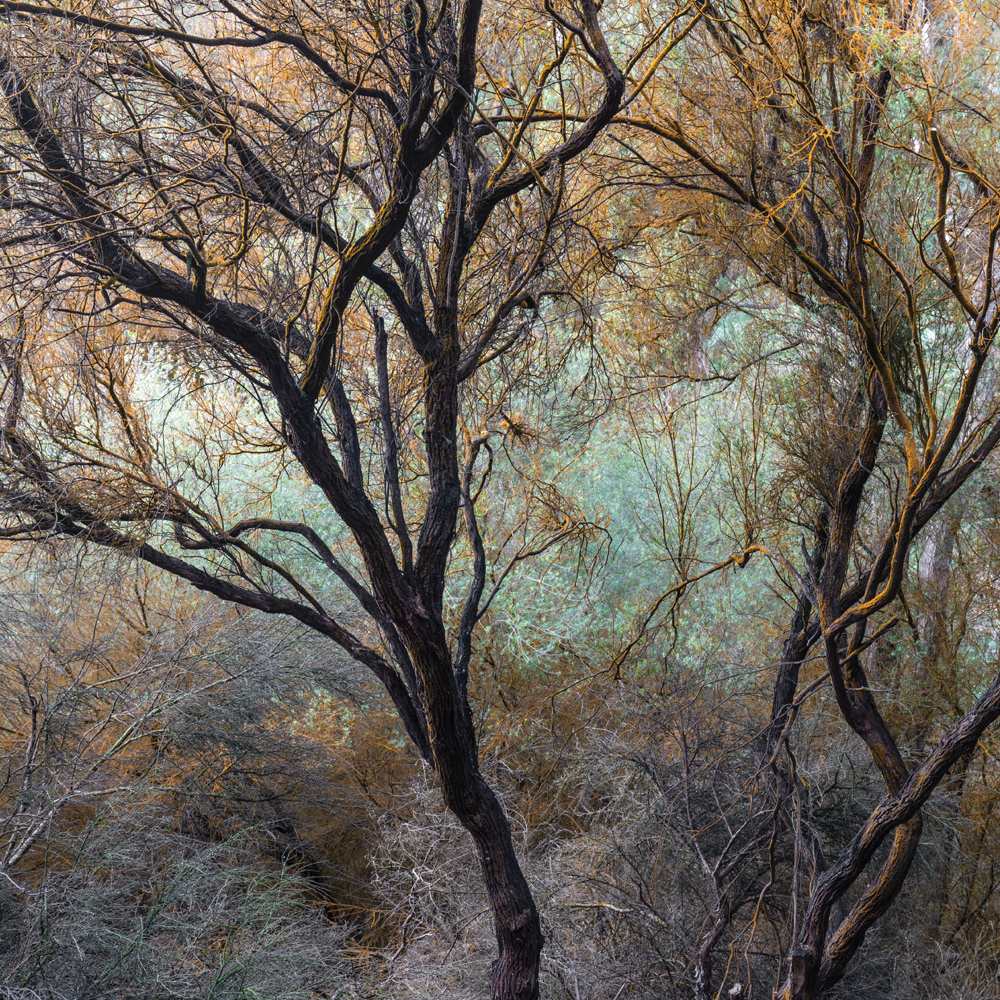ɡull-flas | /ɡull flæʃ/

Gullflass, which translates as either gold flash or, less appealingly, gold dandruff according to some sources, is what Norwegians call orange Trentepohlia. In English, it’s commonly known as orange rock hair. Orange Trentepohlia is actually a type of green algae – however, the green of the chlorophyll is masked by the same orange carotenoids that colour carrots.* It thrives in damp, sub-aerial environments across the globe and is typically found on rocks and bark and living symbiotically with lichens.
Gullflass is responsible for at least two instances of blood rain in the Indian state of Kerala. Occurrences of this apparently supernatural event have been recorded as far back as 2800 BCE. Understandably, the red rain was considered a bad omen – in Homer’s The Iliad, Zeus summons blood rain as a warning to mortals of the cost of war. After a blood rain event in Kerala in 2001, the Indian Government analysed the rainwater. Their results quashed speculation of its supernatural significance, instead discovering it had in fact been coloured by airborne spores of Trentepohlia.
In ancient Greece and the Mediterranean region in general, episodes of blood rain are more likely to be due to sirocco** winds bringing rain mixed with Saharan red sand.
* Up until the 17th century, carrots were not generally orange but either white, yellow, or purple. Modern orange carrots are thought to be a hybrid species cultivated by the Dutch in honour of William of Orange.
** Sirocco winds originate in North Africa, blowing east across the Mediterranean Sea.
Introduction Aeolian Alpenglow
Benthos Crepuscular Crispate Crown shyness
Desire lines Dreich Endragoned Edgelands
Frondescence Fumarole Gluggaveður Gossamer
Karst Komorebi Lawrence Long acre
Machair Monkey’s wedding Moonglade
Psithurism Quartz Rakuyou Roaring forties
Snag Soft estate Specular, diffuse and pellucid
Spoondrift Steam fog Swash zone Sylvan